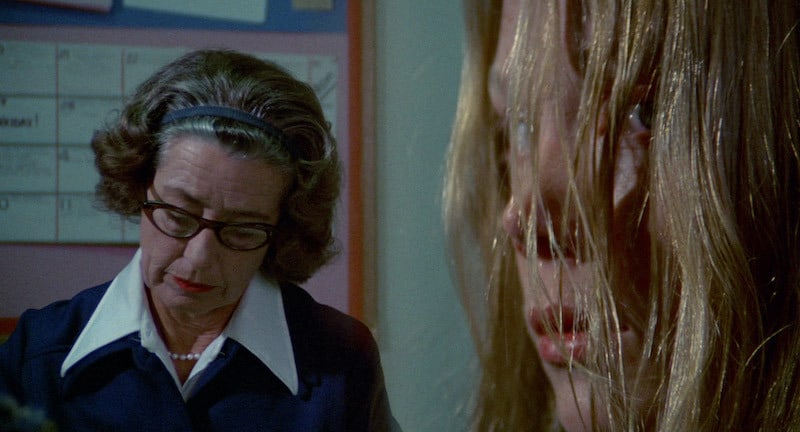Welcome to The Queue — your daily distraction of curated video content sourced from across the web. Today, we’re watching a video essay about the self-aware New Hollywood horror of ‘Carrie.’
How do you classify Carrie (1976)? As a cautionary coming-of-age tale? As one of the best book-to-screen adaptations of Stephen King‘s work? What about as one of cinema’s great “period” pieces? Okay, that last one was a joke. Unless…
Whichever way you slice it (long kitchen knives preferred), Carrie is an essential benchmark of genre cinema. The film was a mainstream breakthrough in Brian De Palma‘s career as well as a fulcrum point of horror and New Hollywood, the cinematic revolution that took place in American filmmaking during the 1960s and 1970s.
Briefly put, the New Hollywood movement was a reaction to several competing factors. These include an increased academic study of film, better access to international cinema, and a perceived staleness in the Studio System. It was a movement that welcomed radical perspectives and self-conscious filmmaking. No surprise, then, that someone like De Palma — in all his irony and opera — would be one of its most interesting players.
Viewed under the filter of New Hollywood sensibilities, Carrie conjures a takedown of puritanism that is equally amusing and horrifying. In true New Hollywood fashion, De Palma used Carrie as a means of engaging with the conventions of the horror genre itself, from repressed moralists to teenage dramatics, all while still making space for sincerity. Indeed, irony and earnestness literally co-exist on-screen with the help of De Palma’s infamous affinity for split screens and split diopter shots.
The result, as the following video essay explains, is a bilateral approach of cynicism and empathy that pokes fun at the superficiality of high school life while treating the teenage need for acceptance with the utmost severity.
Watch “Carrie – Bringing Self Awareness to Horror | New Hollywood Series“:
Who made this?
This video essay comes courtesy of The Discarded Image, a video series created by Julian Palmer that deconstructs film. The series began with a deconstruction of how Steven Spielberg creates suspense with the beach scene in Jaws. It has steadily grown from there. You can check out The Discarded Image’s video essays here. This essay was co-written with Manuela Lazic, who you can follow on Twitter here.
More Videos Like This
- For another sample of The Discarded Image’s work, here’s a video essay about the depth of Clarice Starling as such a compelling character in The Silence of the Lambs.
- And here’s another: on the importance of Persona in the career of Ingmar Bergman.
- And here’s one more on the pivotal role of sound design in the filmography of Edgar Wright.
- Queue favorite Entertain the Elk has a video on what, specifically, earns Carrie its reputation for being so scary.
- And here’s The Take (formerly ScreenPrism) on why Carrie is a prime example of teenage, coming-of-age terror.Uni

